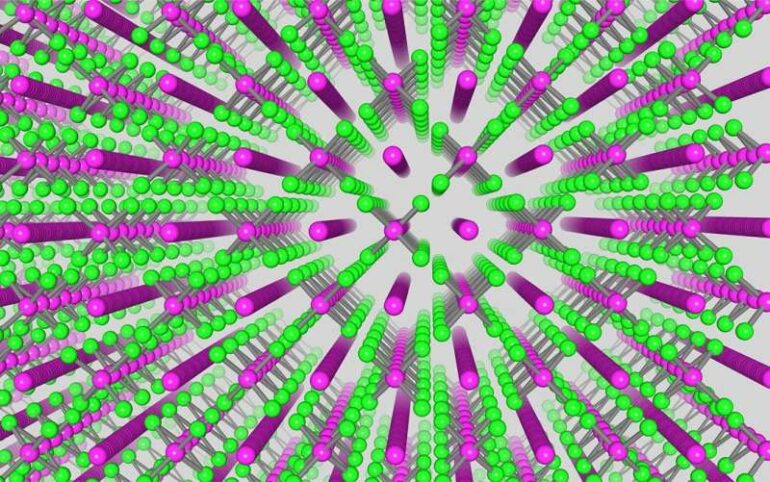Space probes, gas pipelines, and other applications require an ongoing source of thermoelectric power without direct human maintenance, but current technologies for the corresponding energy conversion are inefficient. Now, researchers from Japan and Denmark have provided a greater understanding of the basis of ultralow thermal conductivity in an especially intriguing class of simple crystals, which could advance the efficiency of thermoelectric power technologies.
In a study recently published in Nature Communications, researchers from the University of Tsukuba and Aarhus University have experimentally confirmed the chemical and physical basis of an important yet (until now) evasive phenomenon that is critical to optimizing thermoelectric energy conversion.
Thermoelectric technology can meet certain energy needs by converting heat into electricity. For maximum efficiency, such technologies must minimize thermal conduction. Structural disorder is a means of minimizing thermal conduction and is commonly observed in complex crystal structures. However, experimental difficulties hinder researchers’ efforts toward probing structural disorder in simple inorganic crystalline solids such as thallium selenide-type crystals, limiting the development of this important class of thermoelectric materials. Overcoming this R&D challenge by combining experiments with theory is what the researchers at the University of Tsukuba and Aarhus University aimed to address.
“Researchers have long proposed one-dimensional structural disorder, without clear experimental evidence, as an explanation for the low thermal conduction in tellurium selenide-type materials,” explains Professor Eiji Nishibori, University of Tsukuba. “Experimental confirmation has been eagerly anticipated for years.”
Indium telluride is one such material that has a simple crystal structure and exhibits ultralow thermal conductivity. The researchers obtained the electron density distribution of single crystals of indium telluride, and probed the thermal conductivity along one axis of the crystal. By doing so, they observed disordered one-dimensional chains of indium ions. Energy calculations and atomic displacement measurements agree with these observations.
“Depending on the temperature, we observed a striking diffusion channel of indium ions along the crystal’s c-axis,” says Professor Bo B. Iversen, Aarhus University. “Our experiments confirm the long-held one-dimensional diffusion/hopping hypothesis, and our calculations indicate its applicability to many thallium selenide-type materials.”
These results have important applications. Researchers are now certain of the atomic-level structural basis of the low thermal conduction in thallium selenide-type materials. Accordingly, they can now minimize the trial-and-error that’s common in optimizing the efficiency of an important class of upcoming thermoelectric technologies. Such developments will facilitate many practical applications, such as radio communication from remote locations or obtaining electrical power from the seafloor.
More information:
Jiawei Zhang et al, Direct observation of one-dimensional disordered diffusion channel in a chain-like thermoelectric with ultralow thermal conductivity, Nature Communications (2021). DOI: 10.1038/s41467-021-27007-y
Provided by
University of Tsukuba
Citation:
Advances in simple crystals for thermoelectric technology (2021, November 18)
